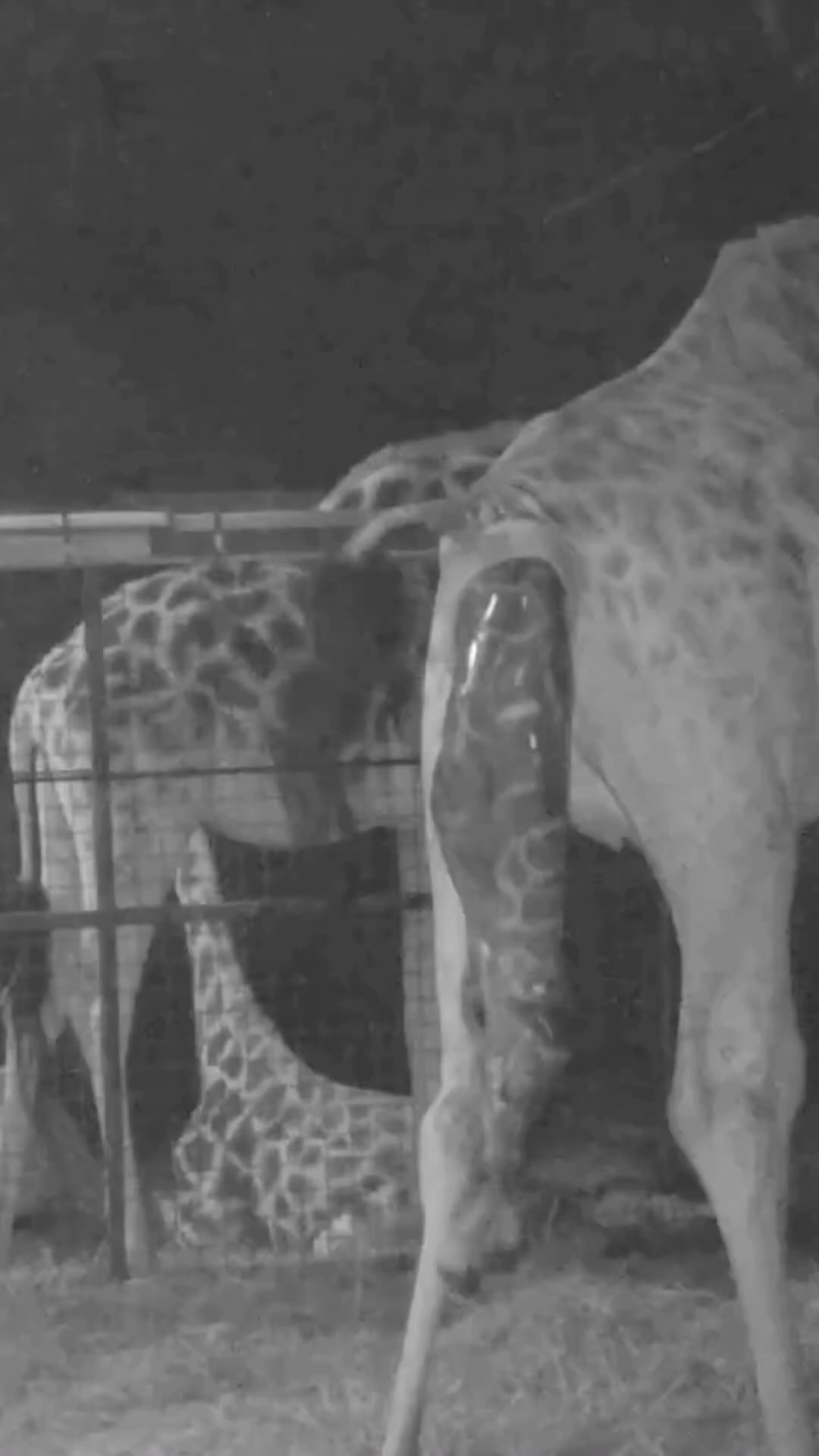– The remarkable event of a giraffe birth at Chester Zoo
– The significance of giraffe births in zoo environments for conservation and education
– How modern technology, like surveillance cameras, plays a crucial role in wildlife monitoring and research
– The collaborative efforts behind managing giraffe habitats in zoos
– The broader implications of giraffe conservation efforts on global biodiversity
#### A Remarkable Giraffe Birth at Chester Zoo
In an extraordinary display of nature’s wonders, Chester Zoo witnessed a significant event in its giraffe habitat—an overnight birth captured entirely by the zoo’s advanced surveillance systems. This occurrence highlights the marvels of giraffe biology and emphasizes the zoo’s commitment to animal care and conservation.
Giraffe births are rare and captivating events. The gestation period for a giraffe can range from 14 to 15 months, culminating in a surprisingly swift labor that takes only a few hours. Most remarkable is the calf’s introduction to the world—a drop of about 6 feet from the mother to the ground, serving as a physical stimulus to start the calf’s breathing. The swift progression to standing and walking is vital for the calf’s survival in the wild, a testament to the resilience inherent in these majestic creatures.
#### Zoo Environments and Conservation Education
Zoos like Chester Zoo are pivotal in conservation and education efforts related to endangered species, such as giraffes. The successful birth of a giraffe in a controlled environment is more than an attraction—it’s a powerful educational tool. It provides researchers and visitors with insights into giraffe behavior, biology, and the challenges they face in the wild. This experience fosters a deeper understanding and appreciation of these animals, encouraging support for conservation initiatives.
Furthermore, the information gathered from observing such events in a zoo setting contributes valuable data to the scientific community. This data aids in understanding reproductive health, genetic diversity, and the overall well-being of giraffes, influencing conservation strategies in captivity and their natural habitats.
#### The Role of Technology in Wildlife Monitoring
The use of surveillance cameras to capture every moment of the giraffe’s birth at Chester Zoo is a testament to technology’s significant role in modern wildlife monitoring and research. Cameras and other monitoring devices allow continuous observation without disturbing the animals, providing a wealth of hidden observational data. This technology is pivotal in studying animal behavior, monitoring health, and ensuring the safety of both the animals and their caretakers.
The footage obtained serves multiple purposes in the miraculous giraffe birth context. It allows zoo staff to review the birth process, ensuring that everything proceeded normally and assessing the need for immediate intervention. Moreover, this visual record is an invaluable educational resource, offering a real-world glimpse into the wonders of wildlife biology.
#### Collaborative Efforts in Habitat Management
The thriving existence of giraffes in zoo habitats, evidenced by successful births, results from meticulous planning and collaborative efforts. Nutritionists, veterinarians, and habitat designers combine to recreate a semblance of the giraffe’s natural environment. This includes providing a nutritionally balanced diet, regular health check-ups, and the design of spacious enclosures with enrichment features that stimulate natural behaviors.
Central to these efforts is the implementation of research findings and conservation practices that support giraffes in captivity and the wild. Partnerships between zoos and global conservation organizations are crucial in promoting the exchange of knowledge and resources, amplifying the impact of conservation efforts worldwide.
#### Global Implications for Biodiversity
The significance of giraffe conservation extends beyond the individual species to have broader implications for global biodiversity. Giraffes are keystone species in their ecosystems, critical in maintaining ecological balance. Efforts to conserve giraffes, therefore, contribute to the health and diversity of entire ecosystems.
Events such as the giraffe birth at Chester Zoo highlight zoos’ essential role in conservation and education. By fostering an appreciation for wildlife and demonstrating the impact of conservation efforts, zoos encourage public support for biodiversity preservation. This support is vital in combating many species’ challenges due to habitat loss, climate change, and other threats.
In summary, the extraordinary event of a giraffe birth at Chester Zoo offers a captivating look into giraffe conservation, the innovative use of technology in animal care and research, and the collective efforts required to manage and preserve wildlife species. As conservation challenges evolve, zoos will remain at the forefront of efforts to understand, protect, and celebrate the natural world, ensuring a future where biodiversity thrives.
*****
Source Description
@chesterzoo Something AMAZING happened overnight in our giraffe habitat, and our cameras captured every moment; enjoy! 🦒❤️


